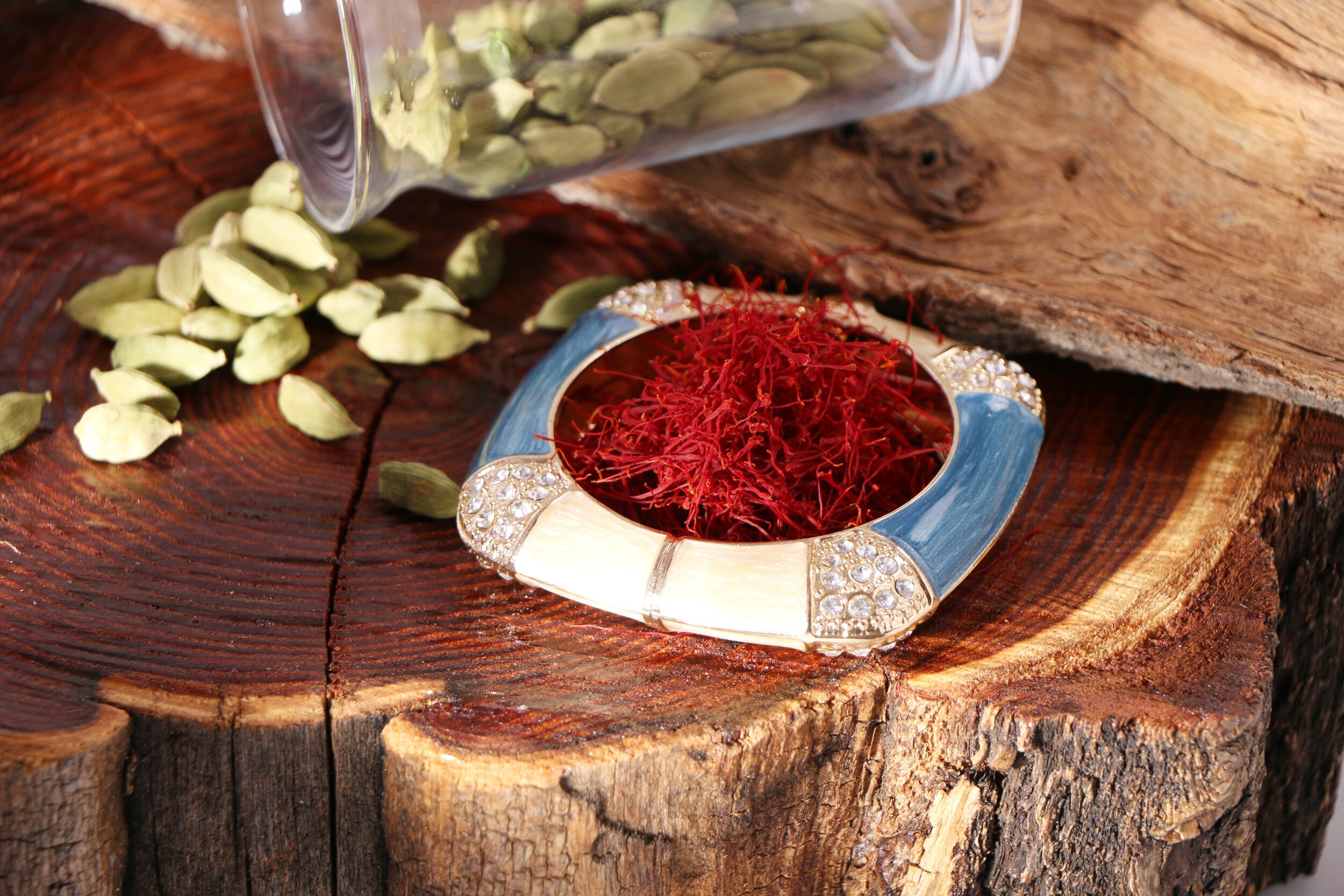How to use Saffron, the world's most luxurious spice
First things first, what actually is saffron?
Saffron is an extremely subtle and fragrant spice - a key ingredient in Moroccan, Spanish and Indian cuisines. Saffron is slightly sweet, luxurious spice with a distinctive floral taste and an earthy aroma - pairing perfectly with paella, risotto and biryani.
Where does saffron come from?
Herati Saffron comes from the beautiful white and purple flower called a “crocus” flower. Our saffron is as good as it gets - from the home of Saffron. It is cultivated in western Afghanistan, in a place called Herat which is on the border with Iran - saffron has grown here for thousands of years.
During the annual harvest, which takes place in November and December, farmers start working at dawn, hand-picking the stigmas from crocus flowers before the desert sun can wilt them and ruin the delicate stigmas. Each flower produces only 3 stigmas, which are hand-picked and dried.
Our saffron threads are pulled carefully from the flower, leaving a characteristic flame-coloured tail. The slight gradation in colour is your assurance that our saffron is 100% pure and never dyed or otherwise adulterated. Our saffron threads are also uncommonly delicate, with a warm, honeyed fragrance reminiscent of dried roses and fresh hay.
Fun Fact:
It takes about 1,000 flowers to produce just one ounce of saffron as each crocus flower only produces 3 stigmas of saffron.
How to identify real Saffron
As Saffron is such a luxurious spice, there are many dishonest traders out there who are selling fake or low quality saffron. For instance, some traders even go so far to deceive consumers by selling safflower as saffron - which is a completely different flower altogether with straight petals and orange threads, and is of course, not the real deal. Other traders sell low-grade saffron, normally due to careless harvesting whereby the flavourless parts of the crocus find their way into the mix, and then to compensate, they add red dye to make their saffron look higher quality than it actually is.
So, what should I look for when identifying true saffron?
Real saffron has dark red threads which are curled and tangled (see picture on right)
Smell it and place it on your tongue - while real saffron will smell slightly fruity and earthy, fake saffron hardly has any flavour or aroma to it
How to use Saffron?
Saffron is a key ingredient in dishes from Spanish paella, to Persian rice dishes and Indian curries
Firstly, steep a few threads in warm water when making crunchy baked rice
Add a handful of threads when making paella
Add complexity to your ice creams, cakes and other desserts
Here are some of our favourite recipes for you to experiment with:



